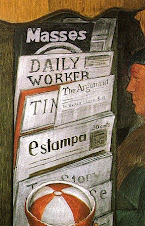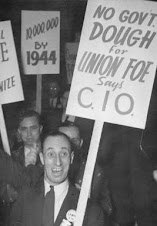When Charlotte's majority-white board voted to close several predominantly black and Latino schools, the ensuing tumult raised the specter of the civil rights era. But the district has also won praise for minority education.
By Richard Fausset, L.A. Times
December 19, 2010
Reporting from Charlotte, N.C. —
Confronted with depressing revenue numbers, this Southern city's school board reluctantly embraced a solution that is increasingly common in America's struggling economy: They voted to close schools, 10 of them.
The decision last month sparked a racially charged uproar. The district is 33% white. The majority of the school board is white. In the schools targeted for closure, 95% of students are minorities.
Before the vote, hundreds of residents, including many worried black and Latino parents, packed public forums to protest. Charges of racism were leveled, and the local head of the NAACP was hauled away from one meeting in handcuffs. School board members have received threatening letters.
Yet, strangely, this season of tumult has also been a season of triumph for a district where the leadership professes to put a premium on educating its poor and minority students.
In an October ceremony at New York's Museum of Modern Art attended by Education Secretary Arne Duncan, the Broad Foundation awarded $250,000 to Charlotte-Mecklenburg Schools, ranking it among the top five large school districts in the nation that have improved learning for poor children and students of color.
How could this school system be simultaneously viewed as hero and villain? The disconnect — and dilemma — has rattled Charlotte, a banking hub that has long prided itself on being moderate by Southern standards, a place traditionally more interested in commerce than conflict.
"I think there was this sense we could make a businesslike decision and move through it and go on to the next thing," Anthony Foxx, the city's second black mayor, said of the closures. "But you know, as much as we've moved on chronologically from the past, there's still some residual issues there."
Over the last half century, Charlotte's 135,000-student school system has toggled from segregation to integration and back. Once again, many blacks and whites are separate. And now, hard times are exposing deep differences in the way residents perceive — and measure — what is equal.
The seeds of the conflict were planted in 1971, when the Supreme Court, in Swann vs. Charlotte-Mecklenburg Board of Education, mandated an integration plan for the district, and in so doing, approved busing plans nationwide.
The year of the landmark ruling, a fire was set in the offices of Julius L. Chambers, the African American attorney who represented the plaintiffs. But over time, many in Charlotte, including many leading white families, came to take pride in the relative success of busing. Residents called Charlotte "the city that made desegregation work."
It lasted about two decades. Support began unraveling in the 1990s, especially as newcomers flocked to Charlotte to work in its banks and other businesses. Many were Northern white-collar workers who were uncomfortable with integrated schools and concerned about what they saw as a lack of rigor in the classroom.
"I believe they conflated desegregation with a generally inferior Southern education," said Roslyn Arlin Mickelson, a sociology professor at the University of North Carolina- Charlotte. "That started a movement from below from newcomers that busing has got to end."
By 1999, a federal judge ordered an end to Charlotte's integration efforts, finding that the district had "eliminated … the vestiges of past discrimination in the traditional areas of school operations."
When parents were allowed to send their children to their neighborhood schools, racially mixed campuses quickly reverted to being either predominantly white and wealthy in the suburbs, or, in the inner city, primarily poor and minority.
That was the scene the current superintendent, Peter Gorman, encountered when he joined the district in 2006.
By that time, the district was working hard to maintain "equity." There were rules governing the allocation of staff, supplies and facilities on inner-city campuses, and a committee to monitor it all, said LaTarzja Henry, a district spokeswoman.
It was what Henry calls the "stuff and things" model. To Gorman it seemed to miss the mark. He noted how the district, in the name of "equity," leaned on a principal to create a chess club at one struggling school because other schools had chess clubs.
The principal dutifully assigned a teacher to head the new club. But to do so, the teacher was forced to abandon an after-school literacy program.
"We could be in compliance with our equity policy, and not have kids graduate from school," Gorman said. "I went to the board and said we've got to increase the graduation rate, the college-going rate.... We needed to focus more on outcomes for kids."
The board and Gorman, former head of Tustin Unified School District in Orange County, began to change things. The equity committee was disbanded. Gorman lumped some low-performing schools into an "achievement zone" eligible for extra funds, staff and professional development (a plan that was dismantled this year because of budget pressures).
He instituted a nationally recognized system that successfully encouraged his best-performing principals to take reassignments in low-performing schools. A new staffing formula gave greater weight to poor students in determining student-teacher ratios.
District records show that between the 2005-06 and 2009-10 school years, black students narrowed the achievement gap with whites by nine points in math tests for grades 3 to 8, with similar achievements in Algebra I and English I. Latino students, too, showed improvements.
Gaps also narrowed between disadvantaged students and the rich — though Charlotte's white and wealthy, in aggregate, still far outperform minorities and the poor.
The Broad Foundation, the Los Angeles-based nonprofit founded by philanthropists Edythe and Eli Broad, cited the district's innovations as reasons for its success.
For some white board members, the innovations also helped justify the closure of the black and minority schools.
Eric C. Davis, the school board chairman, said the 10 closed campuses suffered from a combination of poor academic performance and empty classroom space. Given the looming budget shortfall, which could reach $100 million next year, he said it made more sense to close down underused buildings in an effort to save money to pay successful teachers.
He also argued that families in the suburbs were paying a price for the added attention to the inner-city schools.
It is the suburbs, he said, that typically lose the star principals when they are assigned to the inner city. It is suburban schools that have overstuffed classrooms because of the lopsided spending on poor students.
In the suburbs, Davis said, "there's already pain and sacrifice going on."
However, both Davis and Gorman are aware that their arguments have been difficult to sell to parents and students who are about to lose something as tangible as a school, particularly given the history that preceded the Swann case.
In a letter, the local chapter of the National Assn. for the Advancement of Colored People referred to that background as it urged the board to postpone its Nov. 9 vote. "The school system has a long history, dating back to the days of segregated schools, of providing inferior educational opportunities, resources and facilities to African American and disadvantaged communities," the letter stated.
The hassle and hurt will be tangible for DeAndra Alex and her son Deon, a freshman at E.E. Waddell High School, which is more than 90% minority and is being shuttered to make way for a mixed-race K-8 magnet school. Alex said Deon would probably be sent to a school about nine miles away. Waddell is about a mile from her home.
Alex and other parents at the targeted schools say they have repeatedly tried, with little success, to have the school board redraw its attendance boundaries so that unused classrooms in the inner city might be filled with kids from suburban schools, many of which are overcrowded. They were also dismayed when a number of majority-white schools originally on the closure list were removed by the board.
"What this is doing is awakening a beast in hibernation," she said: "The civil rights movement."
Louise Woods, a white former board member, said recently that the latest conflagration, with its name calling and wounded feelings, had made her "heartsick."
Back when the schools were integrated, she said, there was a sense that "you really had to do right by everybody, that I can't ignore your child because he might be in school with my child."
With segregated campuses, she said, "we're not interacting with each other anymore ... and it's very easy to not be sensitive" to the feelings and needs of others.
richard.fausset@latimes.com
Subscribe to:
Post Comments (Atom)










































No comments:
Post a Comment